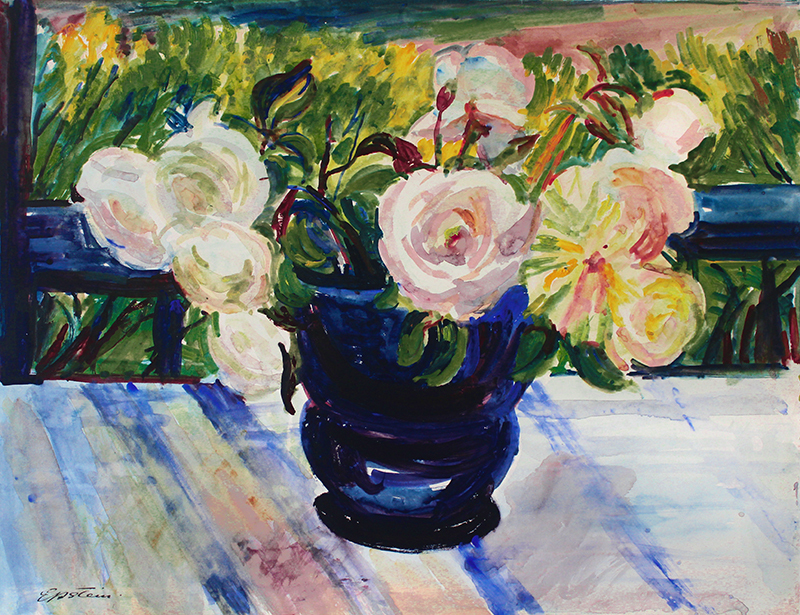
19th, 20th & 21st Century Fine Prints
707-546-7352 · fax 707-546-7924 · web: www.annexgalleries.com · email: artannex@aol.com
(Bouquet in cobalt vase) by Jacob Epstein

(Bouquet in cobalt vase)
Jacob Epstein
(Bouquet in cobalt vase)
Jacob Epstein
1880 - 1959 (biography)Around 1933, the Dutch art firm Ascher & Velker commissioned U.S. ex-pat Jacob Epstein, by then living in London for two decades, to paint a series of twenty floral still lifes, supplying him with fresh bouquets every week. Epstein enjoyed the subjects and process so much that he abandoned his preferred medium - monumental sculptures that vacillated between Post Impressionism and Cubism- to focus solely on the brightly hued flora, creating hundreds of ebulient compositions on paper and chipboard over several years. It's unknown how long this fervor could potentially have lasted, as the Second World War put an end to the practice.
Epstein's gouache and watercolor florals are a surprising departure from the work he was primarily known for, sculpture and monuments which spanned stylistically from Vorticist constructions to freeform Rodinesque studies.


